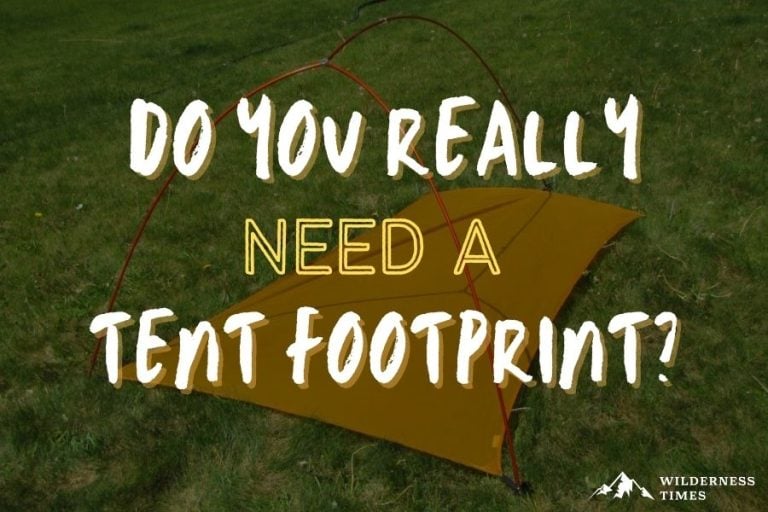While a lot of people don’t bother with them, most seasoned campers will agree that you shouldn’t overlook the footprint.
Using one can prolong the lifespan of your tent by quite a bit, plus, you can make one yourself for next to nothing. So, there’s no reason not to use a footprint.
Want to find out more?
Let’s get started!
Table of Contents
ToggleWhat A Tent Footprint Does
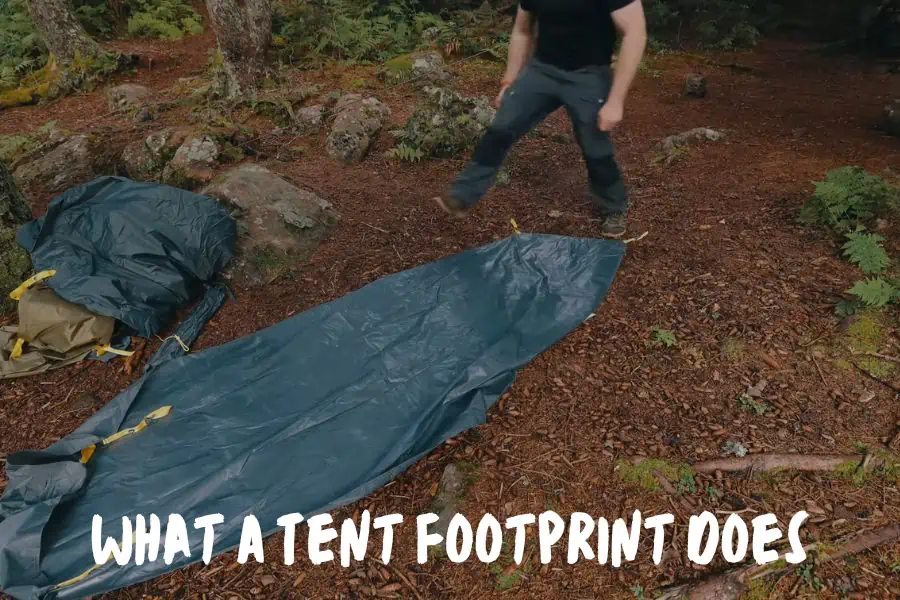
A tent footprint (a.k.a. groundsheet) is a water-resistant piece of fabric that lays between the ground and your tent.
Ultimately, a tent footprint creates an extra layer of protection and minimizes the possibility of your tent floor getting damaged.
They come in handy for a variety of reasons, which all boil down to one main advantage: tent footprints protect the bottom of your tent.
From what? Water runoff, dirt, and sticks, general wear and tear… The list goes on and on!
You can pitch your camping tent directly onto the ground, and there’s a good chance it’ll be fine.
But, over time, the hard, rough ground will wear the tent fabric and waterproof coating down.
Using one will prolong the lifespan of your tent, and you can make one yourself for next to nothing, so there’s no reason not to use a footprint.
READ: Tent Footprint vs Tarp – Which is better?
Advantages Of A Tent Footprint
Here are the main reasons why you should always use a tent footprint when camping on the trail:
Protection
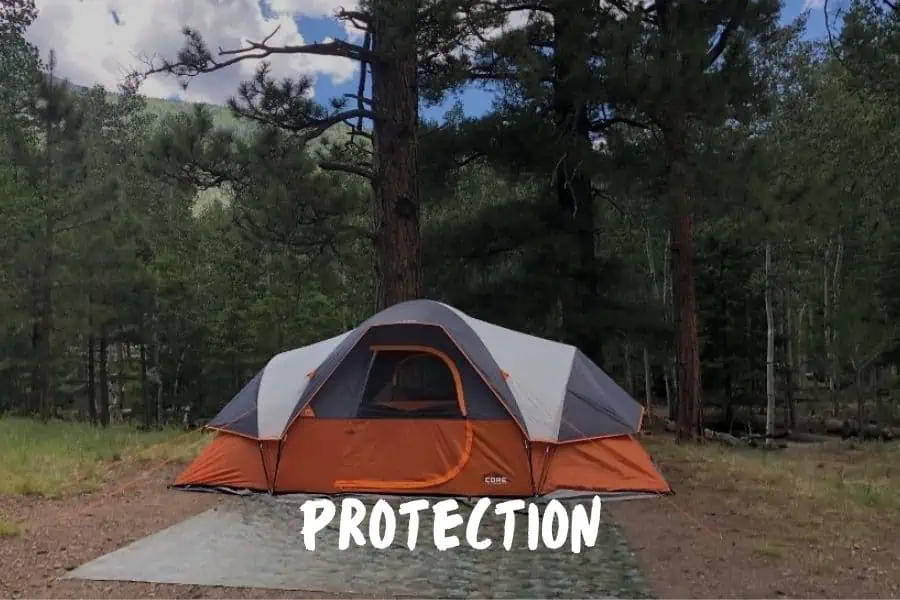
Tent footprints are made from heavy-duty material and are more abrasion-resistant than the bottom of a tent.
Plain and simple, adding another, more durable layer beneath your tent protects the actual bottom of your tent from getting too damaged by wear and tear on the ground.
Even though the bottom of your tent is made of thicker material than the rest of the structure, it is still taking on the brunt of the wear and tear.
Over time, this wear can cause the bottom of the tent to be less effective in keeping water and debris out.
Using a tent footprint will delay the speed of this wear and tear.
Water Resistance
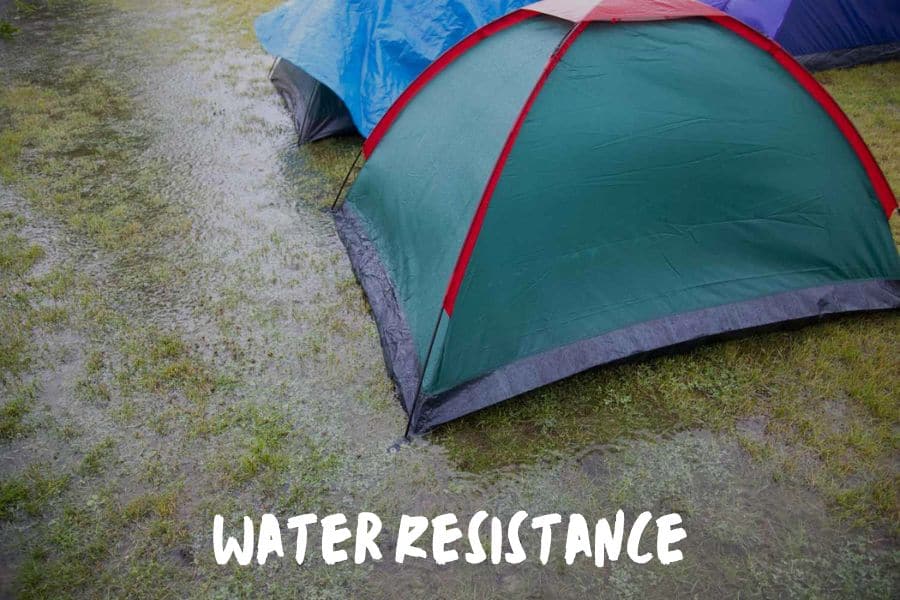
Tent footprints are made of durable, water-resistant materials.
When you lay the one beneath your tent structure, you’re adding an additional layer of protection against water seeping through your tent.
This quality comes particularly in handy when you’re in a rainstorm and there’s rainwater running on the ground underneath your tent.
The footprint will ensure that the water runs underneath it, rather than directly touching the tent structure itself.
Insulation
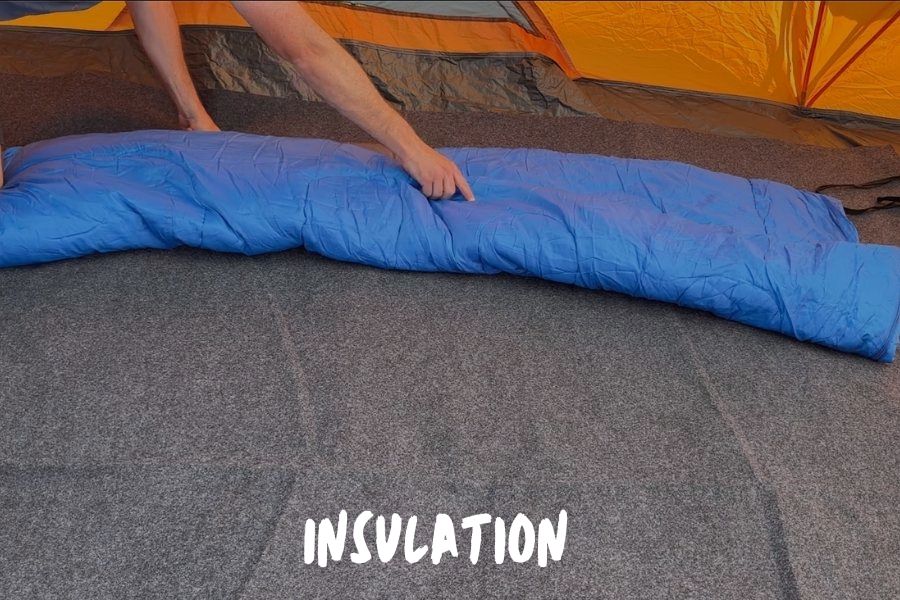
Any camper knows that the ground can be incredibly cold at night – that’s why we use sleeping pads to separate us from the ground beneath us.
While perhaps not its main purpose, an added benefit of using a tent footprint is that it adds another layer between you and the ground and can insulate your warmth.
Also read: How To Insulate A Tent For Winter Camping
Cleanliness
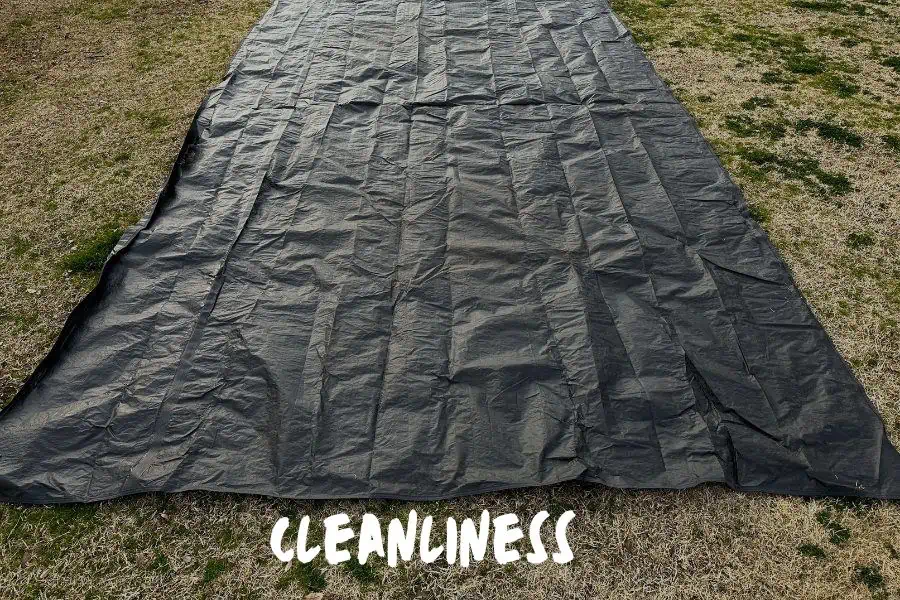
One of my favorite parts of using a footprint? It keeps all of the mess from the ground – including mud, sand, debris, and dirt – away from my tent!
On the trail, keeping your tent clean helps keep the rest of your gear clean. Think about it! Your tent, both folded and set up, touches most of your gear.
If it’s dirty, it can easily spread dirt to the rest of your gear, as well.
Plus keeping your tent as clean as possible, makes tent maintenance even easier.
Having a cleaner tent will save you time by ensuring you don’t have to deep clean your tent or reapply waterproof coating as often.
Risks Of Camping With No Tent Footprint

You absolutely can camp without a tent footprint, but you’re risking potential damage to the bottom of your tent while you do so.
You’re also risking the possibility that the bottom of your tent is not as waterproof as you thought.
Even the most waterproof coating on the bottom of your tent will wear down over time.
If you haven’t reapplied waterproof coating in a while, it’s very possible the bottom of your tent could start leaking or letting moisture seep in from the ground.
This is pretty much the worst-case scenario for many campers. The good news is that it’s super easy to avoid – just use a tent footprint!
Also Read: How To Waterproof A Canvas Tent
Factors To Consider When Buying A Tent Footprint
Some tents come with their custom footprint, but most of the time you need to buy one.
Most companies will sell a tent footprint for each of their tents. However, some companies like Coleman don’t seem to do so, but you can typically find a close enough match online.
However, if you can’t be bothered fiddling around with a DIY project and you’ve got your heart set on buying a footprint, don’t just order the first one you stumble upon.
Take these criteria into consideration when you’re shopping, to make sure you get a footprint that’s going to work for you:
Compatibility
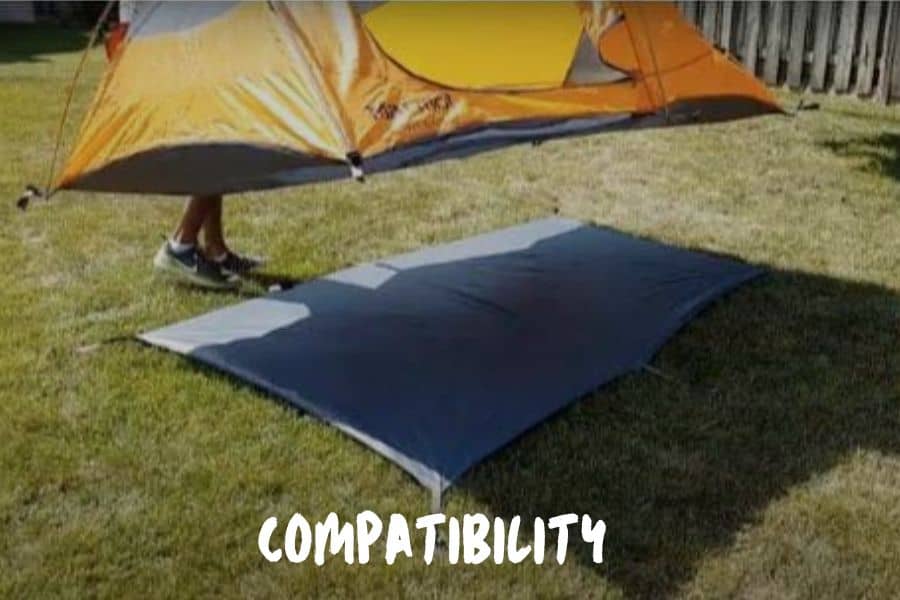
It might go without saying, but the most important thing is that you get a footprint that’s compatible with your specific tent.
If you have to modify the footprint to fit, you may as well have just made a DIY footprint to begin with.
Compare the dimensions of your tent floor to the dimensions of your footprint.
You want to make sure that the footprint is just slightly smaller than the base of your tent, so that there aren’t any bits and pieces sticking out from underneath.
Material
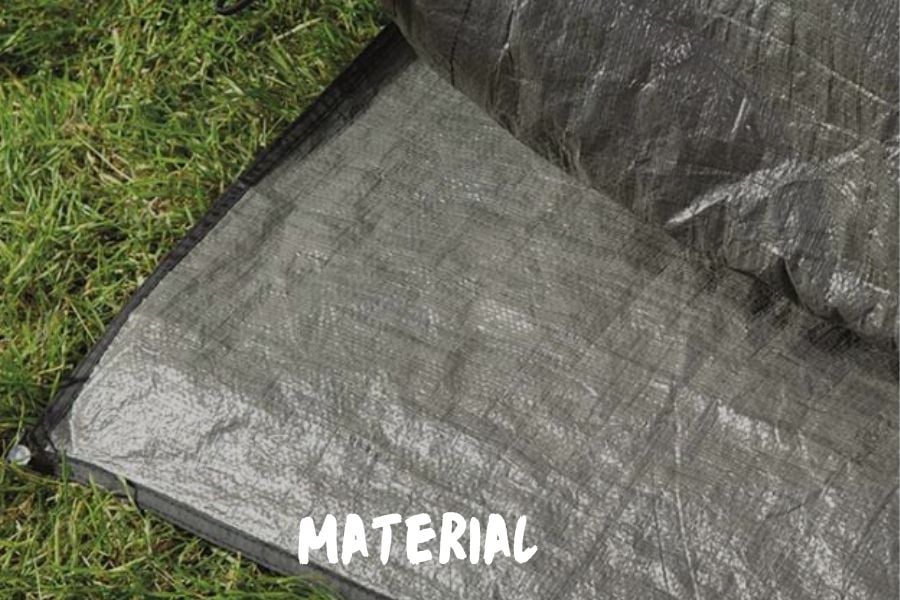
Most footprints that you can buy from tent manufacturer brands are made of either polyester or nylon, much like tents themselves.
The fabric your footprint is made of must be waterproof and durable.
As far as the latter goes, checking the fabric’s denier rating is a good way to get an idea of how strong it is.
The higher the denier rating, the thicker the fabric. The thicker the fabric, the more resistant it’ll be to wear and tear.
Look for a footprint with a denier rating of 30 or more, ideally.
You can always simply buy a camping tarp and use that as a footprint, but we typically find that to be a bit unwieldy.
Portability
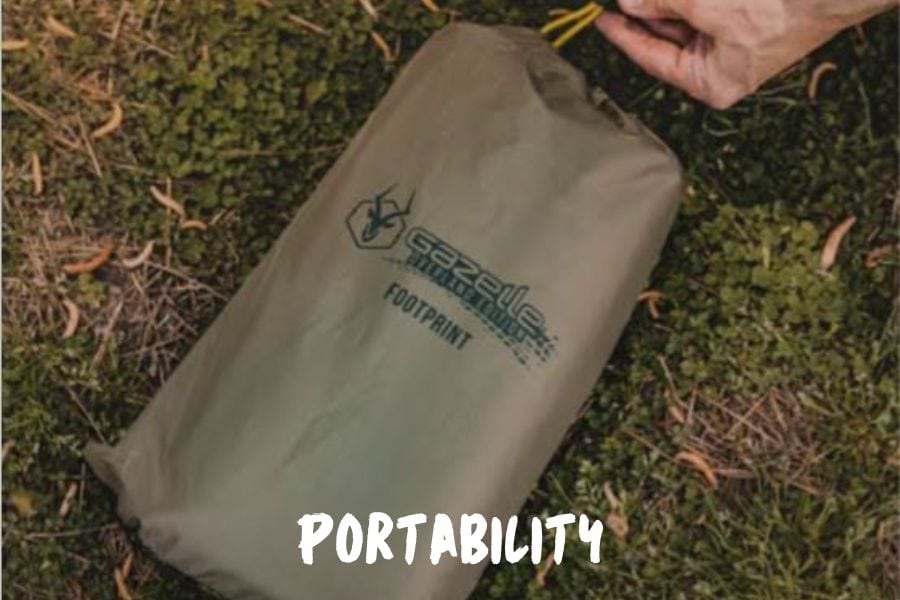
If you’re an ultralight backpacker trying to keep your load as light as possible, you’ll definitely want to pay attention to the weight of your footprint.
Some footprints can up the total weight of your tent by as much as 20%. That’s a fair amount of extra weight if you’re backpacking and you need to carry your camping gear long distances.
Affordability
And, of course, you want to make sure you don’t end up spending too much money on a footprint.
After all, you can easily make one yourself dirt cheap.
So, if you can’t find one that fits your tent at a reasonable price, it’s worth putting in the tiny bit of effort it takes to make one.
Care & Maintenance Of Tent Footprints
Because they are made of more durable materials, tent footprints don’t need quite as much maintenance as tents.
However, they still need a level of cleaning, repair, and proper storage to stay in tip-top shape!
Cleaning & Drying
For the most part, the tent footprint won’t require too much effort when it comes to cleaning.
If there is an average amount of dirt on the footprint, you can either brush it off with your hands, or use a damp cloth to clean the dirty areas.
If the tent footprint is especially dirty, you can clean it just like you would deep clean your tent.
To do this, get a large bucket of warm water and add a small amount of tent-specific soap.
Gently wash the footprint in the warm, soapy water and rinse until clean.
Tent-friendly soaps you can use for deep cleaning include: Nikwax Tech Wash, Grangers® Tent + Gear Wash, or GearAid® Revivex.
Once the footprint has been cleaned, lay it out in a sunny, dry spot until it is completely dry. Ensuring the footprint is totally dry will help prevent mold and mildew growth in storage.
Making Repairs
Since your tent footprint is your tent’s first layer of defense against the ground, it’s likely that it will collect tears or rips throughout its lifespan.
If the tear is fairly small, you can use tent repair tape, or duct tape, to patch it up.
These are the most frequent type of tear seen in tent footprints and are fairly easy to handle.
However, if the tear is on a larger size, patching it up might not be as effective.
Remember, one of the footprint’s main purposes is to keep water away from your tent.
If the tear – even when repaired – looks like it won’t stand up to running water, it’s time to get a new footprint.
Also See: How to Patch a Tent: Quick and Easy Solutions for Rips and Tears
Storing
The main goal of storage is to prevent mold and mildew growth on your footprint.
To do this, you’ll want to loosely fold your footprint and place it in a cool, dry environment.
The loose folds will ensure that there is space left for water or condensation to escape – even in storage.
The cool, dry environment ensures that the footprint as a whole is kept away from damaging elements, including heat, additional moisture, and sunlight.
Budget-Friendly DIY Footprint Alternatives
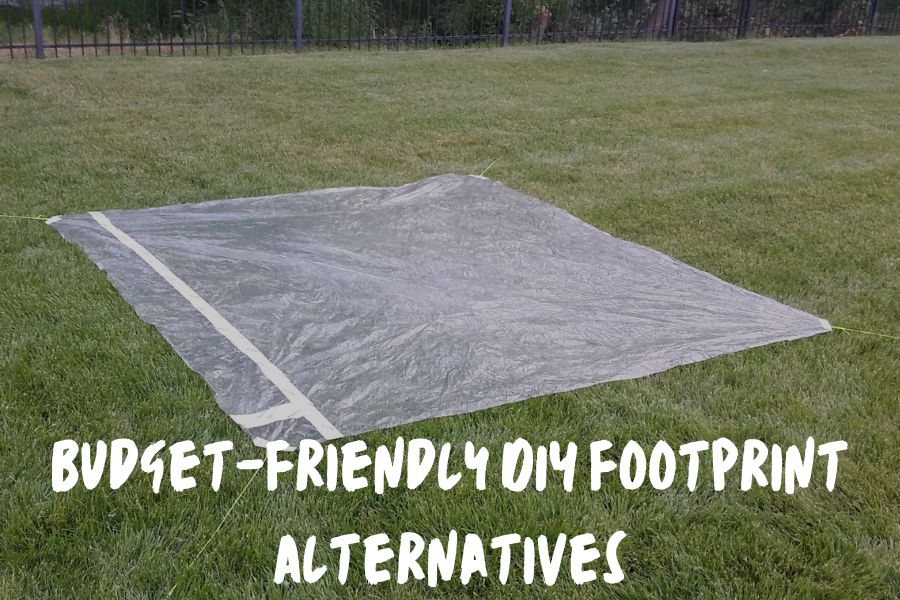
If you’ve got an expensive tent and you want it to last you a long time, you should be using a footprint.
Some tents come with footprints included, but you might be left to figure it out on your own.
If you choose to buy a footprint, you can get one specifically designed for your tent. This makes it super easy to use, as it’s the perfect size, and they’re usually fairly lightweight.
That being said, using a camping tarp or making a footprint on your own can work just as well.
Plus, you can make one for a fraction of the price, and you’ve probably already got a tarp, which is great news for campers on a budget.
Some of the best things to use as a footprint include:
- A ground tarp
- Polycryo
- Tyvek
- Shrink film
How To Make Your Own Footprint: Step-By-Step
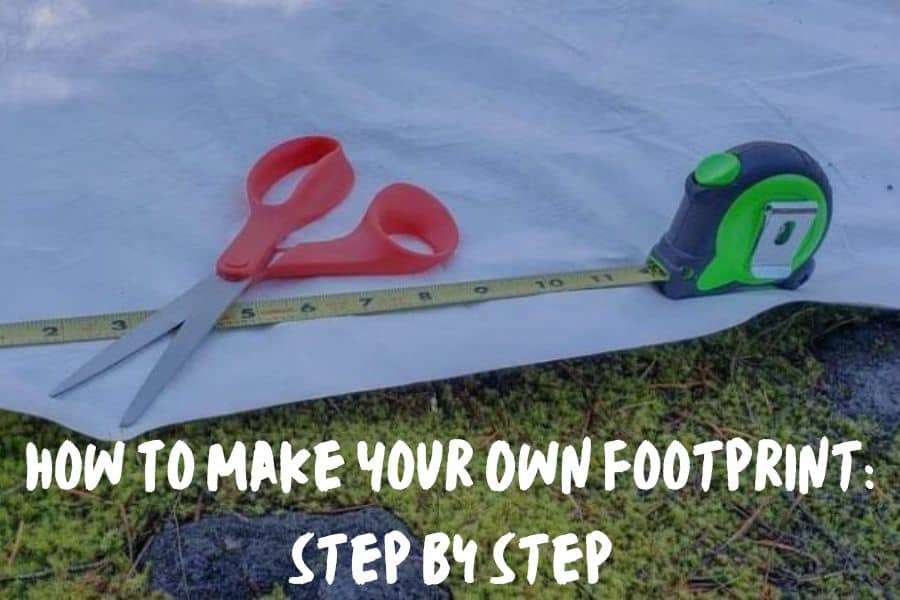
To make your DIY tent footprint, here’s what you’ll need to gather:
- A piece of fabric that’s larger than the base of your tent
- A marker
- A sharp pair of scissors
- Your tent (or the dimensions and a ruler)
Once you’ve collected all of these things, you’re ready to get started. And this is how you do it:
- Take a piece of whichever fabric you’ll be using.
- Place your tent on top of the piece of fabric.
- Take a marker and trace around the edges of your tent.
- Now, make a second line that’s around 2” narrower on each side than the first one.
- Next, take your scissors and cut along the second line.
And there you have it! Your footprint is all done and ready to go.
The true key is just making sure your footprint is smaller than your tent bottom.
If there are any bits of footprint sticking out from underneath, it’ll collect rainwater.
FAQs
Does Every Tent Come With A Footprint?
Unfortunately no, not every tent comes with a footprint.
If you need one for your tent, you can buy one from an outdoor shop, or make one for yourself with the instructions included above!
Can I Use A Footprint From A Different Tent Brand?
Yes! As long as the footprint fits the size and shape of your tent, it will be effective!
Can A Damaged Footprint Be Repaired Or Should It Be Replaced?
It depends on the damage. If it’s a small tear, you can likely patch up your footprint with repair tape and use the footprint again.
However, if the footprint has any large tears or rips, it’s unlikely that you will be able to patch it up so it can be used effectively again.
In this case, it might be time to invest in another footprint.
Can I Use A Bigger Footprint Than My Tent?
No, you do not want to use a footprint that is bigger than your tent.
This is because rain can accumulate in any puddles on the material that “peeks” out from under the tent structure.
These accumulated puddles can create standing water under your tent, which can be worse than not having a footprint at all!
Can I Use A Smaller Footprint Than My Tent?
Yes! It is recommended that most footprints are slightly smaller than the tent they are used with.
However, if the footprint is substantially smaller than the tent, it will likely not be effective.
What Now?
Tent footprints are always a good idea. They’re a very useful piece of camping equipment that provides extra protection for your tent and keeps it clean as well.
Plus, you can easily make one yourself out of inexpensive materials, so, there’s no excuse not to have one.
Take good care of your tent, and it’ll serve as your home away from home for years to come.
More on Tent Parts & Materials:


